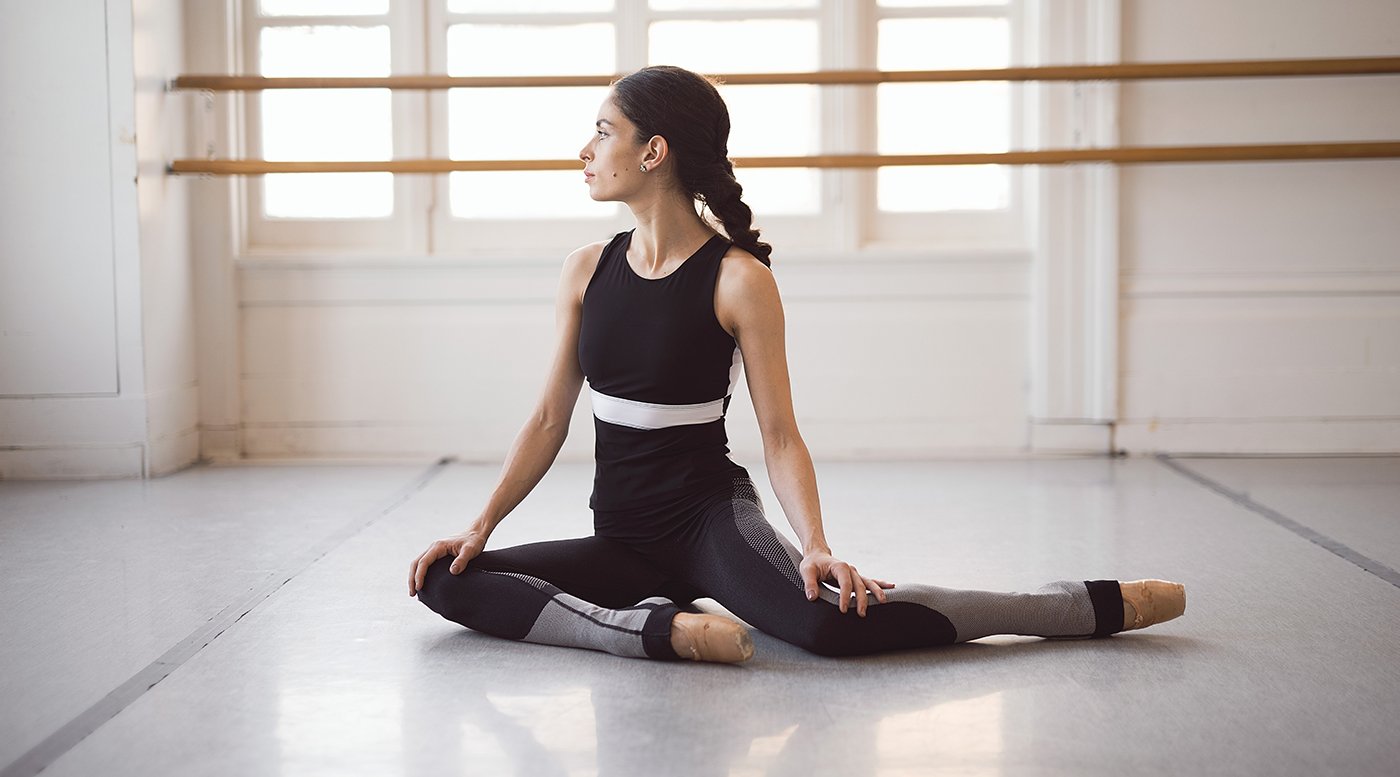
15 Dec Barre á Terre – Why a Favorite Among the Pros
One and all, we find ourselves captivated by the elegance, grace, artistic and athletic prowess of a ballerina. Their amazing ability to pirouette, assemblé, or perform a grande jeté with such ease and power is mesmerizing. These professionals are not born with all these techniques but they are the result of extensive practice and rigorous training. Barre ea Terre (or barre on the floor) is challenging, technically rigorous and therapeutic regimen that helps dancers and athletes achieve focused intensity, power and grace all at once.
The Floor Barre exercise, with its birth in France by Boris Kniaseff and it’s methodology evolved by Zena Rommett and more recently by Cathy Laymet and others, has proven to be a rewarding addition to a dancer’s conditioning workout regime so they can continue moving audiences. What makes this type of training beneficial for and sought out by the professionals?
One key benefit derived from barre on the floor (lying down) is that it causes less strain to the hip joints. Time and again, as a dancer is standing at the barre, their turnout can become forced beyond their range of motion. What this translates to is the dancer using gravity and their own weight to coerce their legs to turn out in an attempt to reach the “flawless” 180-degree turnout. Since this is not an innate ability, forcing it can be dangerous for your joints. Barre workouts on the floor underscores the importance of promoting a natural turnout by allowing movement that is gravity resisted and assisted.
Without proper placement, it is almost impossible to achieve proper technique in ballet.
With its major focus on alignment, which is fundamental to dance well and to be able to obtain a strong technique, barre workouts on the floor can make a grand improvement in a dancer’s placement. Without proper placement, it is almost impossible to achieve proper technique. In addition to improving turnout, it can also increase mobility and flexibility for more range of motion, build strength that is essential in extensions, increase your stamina, improve your coordination for more fluid and graceful movements, and it can even calibrate your kinaesthesia, which is your awareness or sense of movement and body position.
Barre workouts on the floor are also recommended and highly used for dancers that are recovering from an injury because you can avoid weight-bearing exercises but still work on your muscles, correct improper posture, and avoid needless strain to a body that needs to recover. This modality enables dancers to rebuild strength and natural mobility. A variety of elite dancers and athletes have been known to have favored including Barre á Terre in their regimes, such as Misty Copeland, John Curry (Olympic Ice Skater), and even Patrick Swayze.
Yet, Barre á Terre is not just for the pros. Having no impact on the body or pressure on the joints, beginners to experts, young ones to seniors, can derive plenty of benefits from this effective workout. BFW has new Barre á Terre Classes within its assortment of virtual classes so that you can keep improving your personal dance style and technique, since it’s never too late to ballet.
